How to Help a Stringfoot Pigeon
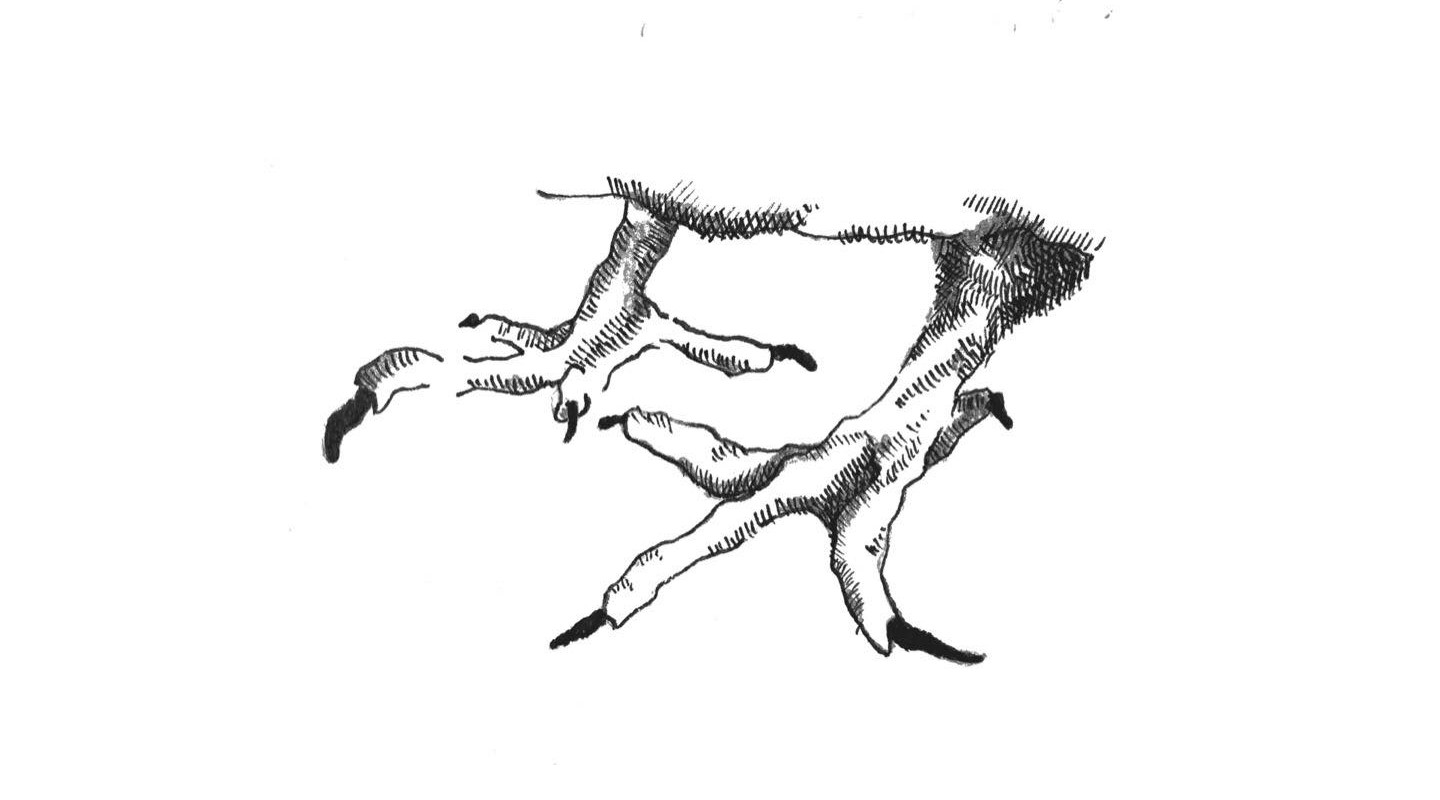
Illustrations by Anya Katz.
You’ve probably seen pigeons with mangled, entangled, or missing toes. Here’s how you can give these ‘stringfoot’ birds a life-saving pedicure.
If you pay attention to city pigeons, you’ll likely notice that many are missing toes or even entire feet. You might also notice birds limping around on swollen feet contorted into little fists. In most cases, closer inspection will reveal that the swelling is caused by a tight knot of string, hair, ribbon, thread, or other debris. If a pigeon’s foot gets tangled in the course of nest building or foraging, there’s not much the bird can do.
These “stringfoot” birds often suffer badly. The tangle gets tighter and tighter until circulation is cut off and flesh rots away. Hair slices through muscle and bone. The most unlucky stringfoot pigeons end up with their feet tied together, vulnerable to predators and pervert flockmates. On the bright side, you will also see many pigeons who have survied this ordeal and are now living a decent life with a missing toe, or even missing both feet.
In some cases, giving a stringfoot pigeon a pedicure isn’t too difficult, and can be quite rewarding. If you like watching stuff like blackhead removal videos, you might find it cathartic to release the pressure on a swollen toe. Or you might enjoy the challenge of earning the trust of your potential patient, and then catching them with your bare hands.
Step Zero: First, do no harm
As I mentioned above, pigeons can (and often do) survive losing a toe or foot. Before intervening, you should ask yourself:
Is it just a single toe that is mostly already “dead”? If so, it will likely fall off soon, and destringing will potentially be more damaging than helpful.
Can the bird still effectively forage for food? If so, consider that they may have a mate and/or babies waiting back at a nest for them. If the destringing is so serious (i.e. leading to bleeding) that you need to care for the pigeon after, it might not really be in the pigeon’s best interest.
Is there a local organization or person that specializes in helping pigeons? (Pigeons specifically - many wild bird organizations are unable to help pigeons as they are not a protected species.) If so, you should consider trying to contact them first.
It’s also important to realize that pigeons mostly hang around the same general area, so there’s rarely a need to immediately attempt to destring. In general, only attempt to destring when you are confident that it is in the bird’s best interest.
Step One: Assemble a Destringing Kit
Ideally, when you notice a stringfoot pigeon, you will catch him, remove the tangle, treat any wounds, and directly release the bird back to his flock. It’s important to quickly release the bird where you found him, because he might have a bonded mate or nestling waiting. Thankfully, most pigeons can be quickly dethreaded using a few simple tools, or even your bare hands. Here’s the items in my “destringing kit”:

Cutting and Tweezing Tools: I bought this cheap dissection kit because it contains a lot of good tools for dethreading, including small, sharp scissors with flat tips (so you don’t accidentally stab the pigeon) and a pair of rat’s tooth tweezers (you can use the “tooth” to snag thread that has cut into the pigeon’s skin).
Disinfectant: If the string has cut into a pigeon’s foot, you’ll want to disinfect the wound before you let the bird go. As far as I know, any generic antibiotic works for this (I use a Neosporin spray), but you could also use an antibiotic painkiller formulated for birds, like Butorphano. Interestingly, veterinary quantities of drugs that would normally require a prescription are available from online pigeon supply stores!
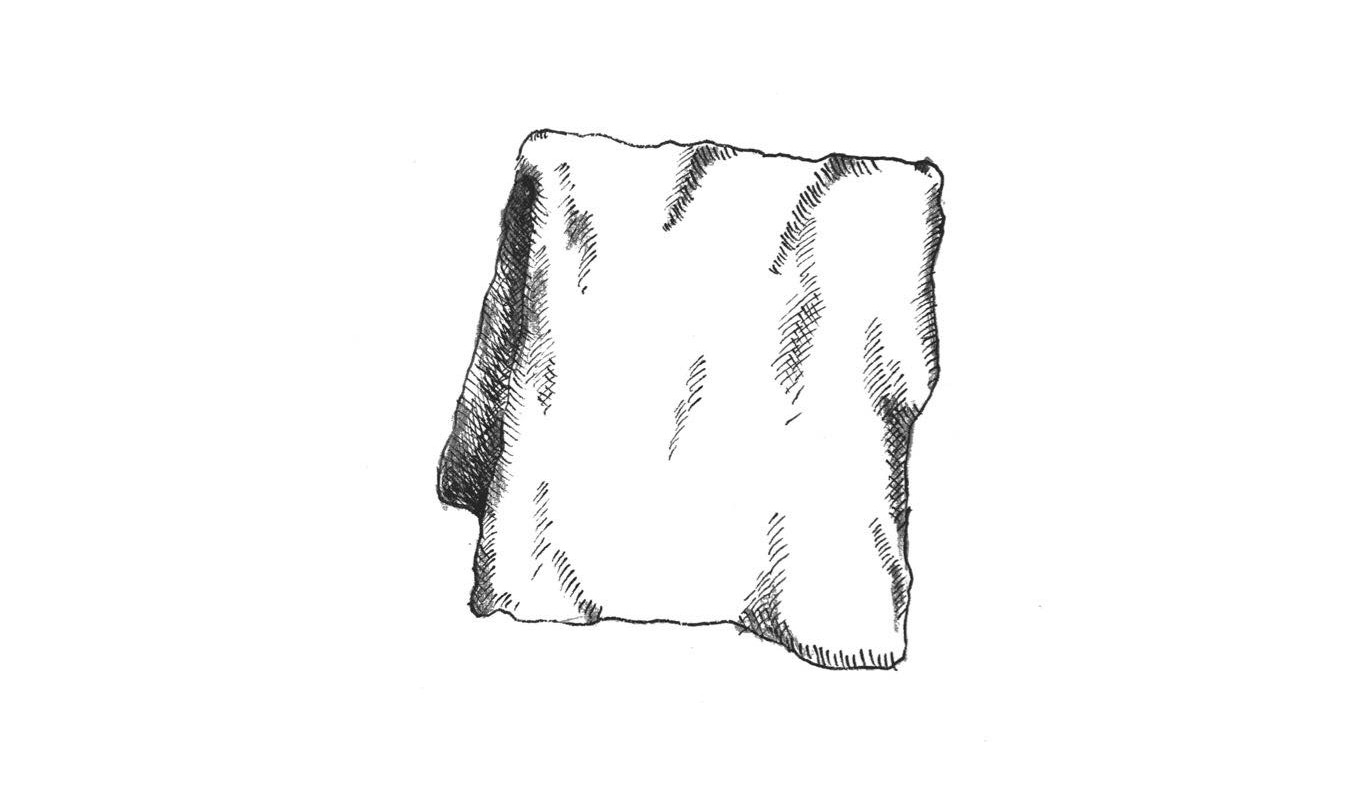
Towel and Paper Towels: The towel helps keep your clothes clean and keep your patient calm. Usually pigeons will hold their poop while you’re holding them, but better safe than sorry.
Duffle Bag, Box, or Backpack: If you find a bird with open wounds or other health problems, or if you find a bird when you don’t have your destringing kit on you, you’ll need to bring the bird home for treatment. A small ventilated box or create is obviously best for this, but I’ve found that a duffle bag or backpack with some cardboard at the bottom works fine so long as you hold it carefully. Once inside a dark bag or box, a pigeon will usually stand still and quiet. In case you find a bird when you’re totally unprepared, you can improvise: I once took my sock off and used it to hold the pigeon. Or you can just carry the bird in your hands.
Pigeon Feed: To attract and distract your mark, you’ll normally need some food. A birdseed mix for pigeons is best (like Hagen Pigeon and Dove Mix) but pigeons have robust digestive systems so you can improvise here as well. I once was able to sweet talk a young bird into my hand without using food, but this will probably only work with a desperate, trusting pigeon.

Hand Sanitizer: You’re unlikely to get sick from handling a pigeon, but it’s obviously a good idea to wash your hands after handling any wild animal.
Pesticide (Optional): If you really want to make your friend’s day, you can apply a pesticide powder to the bird after you’ve resolved their foot problem. This will eradicate any unwanted freeloaders.
Coagulant (Optional): Sometimes, in particularly hairy cases (sometimes literally hairy), the dethreading process will result in bleeding. Pigeon blood doesn’t clot as quickly as human blood, so it’s good to have a coagulant on hand to apply to bleeding cuts. I carry around a little baggie of cornstarch – thankfully I have never needed it! You could also use something like Clotisol.
Step Two: Observe Some Feral Pigeons
Scattering some food will attract the birds to you so you can inspect their feet, and will also build trust. Often there will be multiple birds in the flock with foot problems: identify which are the most in need, and what their personalities are like. Some birds are trusting, and will eagerly eat from your hand and allow you to handle them. (Most pigeons aren’t truly wild, they’re the “feral” descendants of domestic animals, kind of like stray cats). Other birds might be more wary. Some birds with bad stringfoot will pitifully drag themselves close to you using their wings, while others will stay at the edge of the flock, as far away from you as possible.
If you see a stringfoot bird near your home or workplace, you don’t need to catch and treat it immediately. Pigeons are homebodies, and will typically forage in a small area near their roost. You can build a relationship with the bird over time and catch it more easily.
Step Three: Set Up the Catch
The best time to catch a pigeon is early in the morning, when the flock is hungry. By the time evening rolls around, most pigeons have filled their crops and won’t risk getting within arm’s reach to eat seeds you’ve set out. This is especially true in summer.
But in the morning or during the depths of winter, hungry pigeons will climb over each other in a rush to peck up seeds, and it will be much easier for you to grab your stringfoot patient.
I usually spread some feed around my feet, and position my hands over the seed. I sit still until the flock (including my target bird) are busy pecking away at seeds below my hand, and then quickly grab my target bird with both hands. This often requires a decent amount of patience: I’ve found it’s best to wait until my target bird is right under my hands, preferably squished in with a crowd of other pigeons. Dropping more seed down into the flock can cause the pigeons to excitedly crowd each other and forget the human hands hovering above.
It also takes a fair amount of confidence to grab a wild animal. My first attempts were often too slow or indecisive: while it helps to slowly move your hands into position, you must fully commit to a grab. Pigeons are relatively hardy, and are more likely to be injured by a loose, sloppy grab than a firm grab with both hands or a one hand grab that pins their body to the ground. If you miss, simply spread some more seed, wait for the flock to return, and repeat the process.
This GoPro headcam video illustrates the strategy described above:
There are other good ways to catch pigeons (see the resources section below), but I’ve found this method works well for NYC parks, where one doesn’t want to be too disruptive and pigeons tend to be fairly trusting.
Step Four: Dethreading
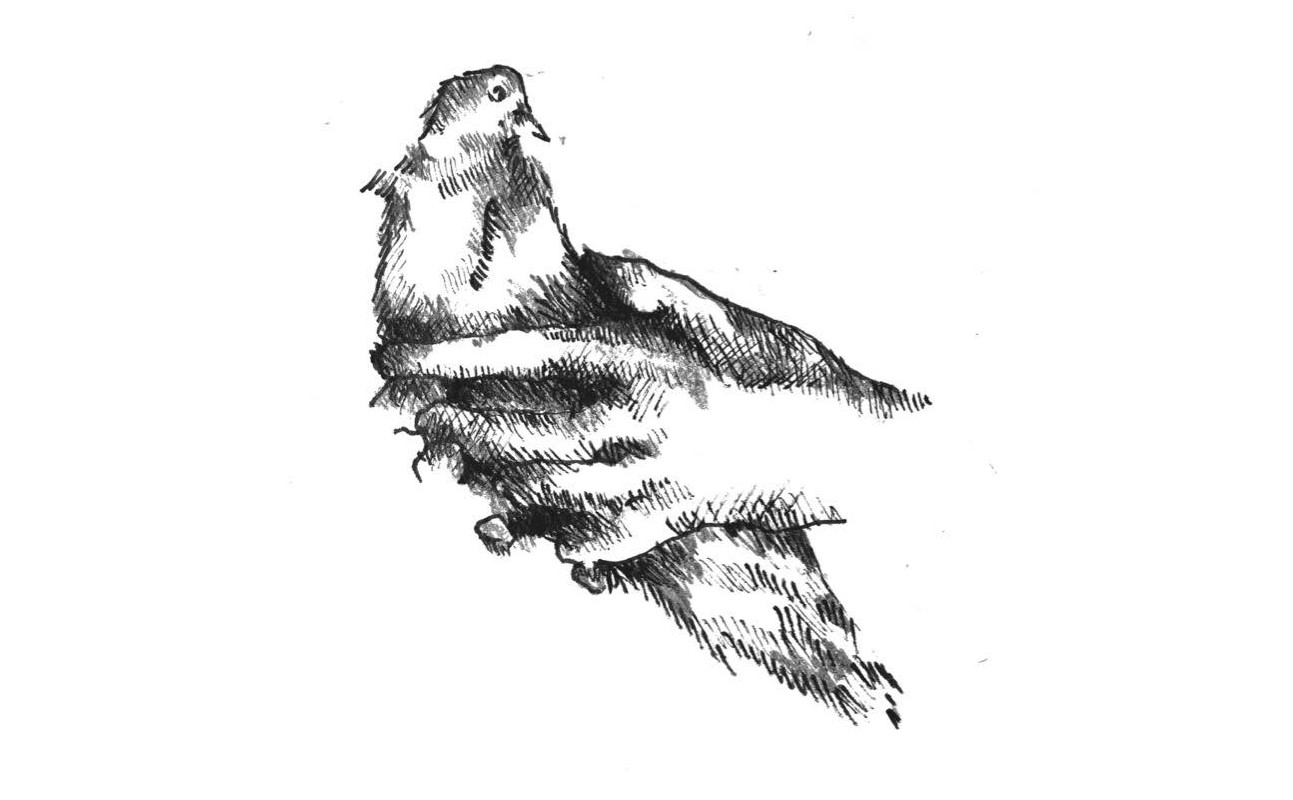
As soon as you’ve successfully grabbed a pigeon, your first step is to secure the bird and calm them down. When a pigeon is handled correctly with legs and wings held flush back against the body and tail feathers, the bird is unlikely to struggle against you grip. Once the pigeon is securely in your grasp, you can optionally flip your patient upside down, and/or wrap a towel around their whole body to create a “pigeon burrito”. If this is done properly, the bird should go into a sort of trance-like state, which will make your dethreading work easier and safer.
If the thread, hair, or other entanglement has not yet cut into the pigeon’s toe flesh, the dethreading process is usually fairly straightforward. Just make sure to dispose of the string once you’ve removed it so that it doesn’t entangle another bird.
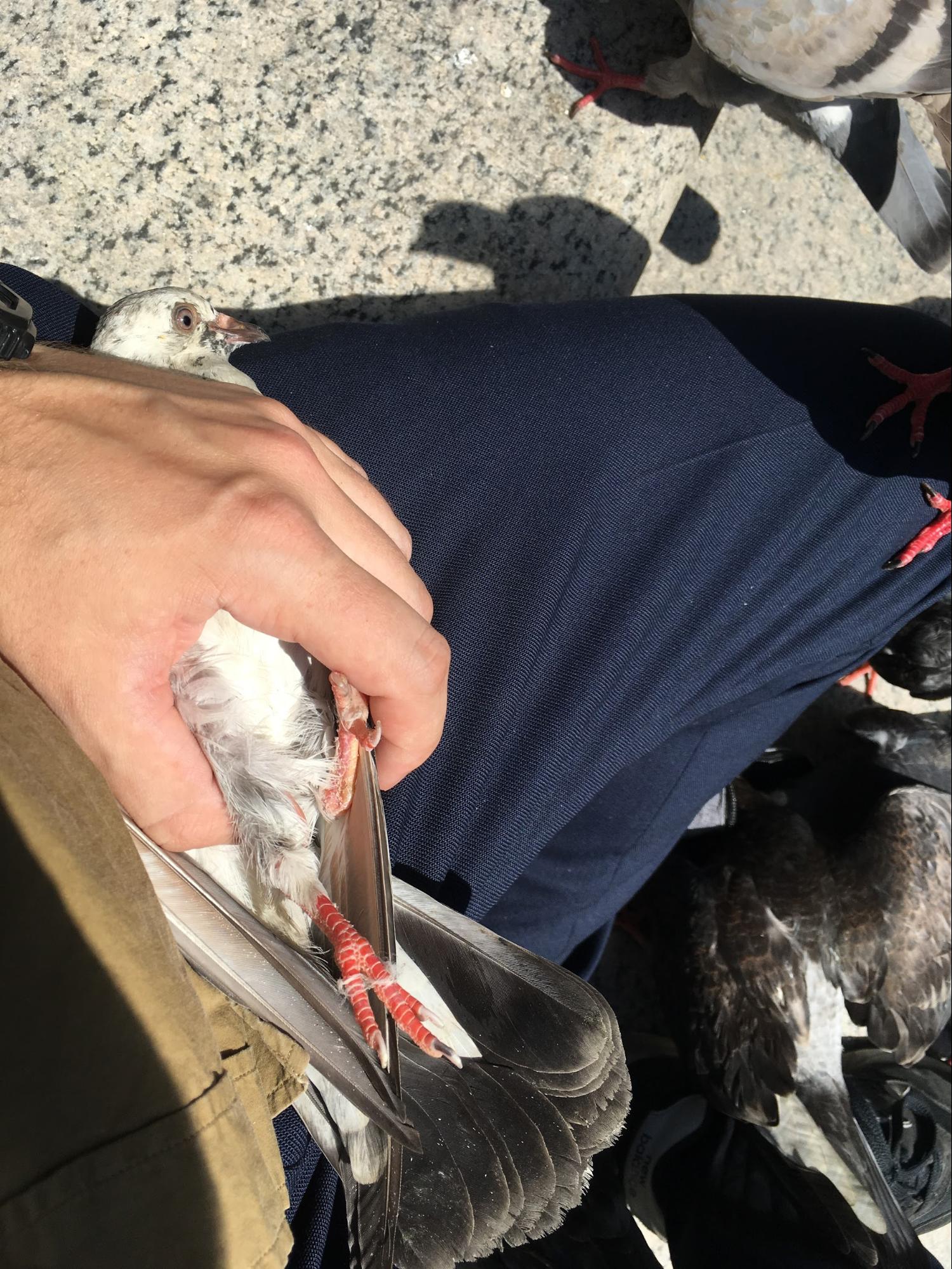
A relatively straightforward case of stringfoot where string has not yet cut into the foot.
But if fine thread or hair has cut into the pigeon’s toe flesh, the dethreading process often requires 15-45 minutes of careful work. In these tricky cases, especially when the entanglement involves hair, synthetic materials, or fine thread, it’s critical to ensure the hair or thread has been 100% removed. Thankfully, this can often be accomplished without causing bleeding, even when the thread has cut so deeply that skin has begun to grow over it.
In these cases, I follow a procedure:
Thoroughly clean and disinfect the area around the cut, removing any dead skin that has grown over the string.
Remove any loose loops of string. I make sure not to make any unnecessary cuts: the goal is to remove whole knots of string at a time, so that I’m sure that 100% of the string has been removed.
When only tight loops remain, search for an “end” of the string. If an end is found, begin unwinding. If an end can’t be found, use a pair of rat’s tooth tweezers to pull the thread or hair out of the cut. Use a magnifying glass to ensure that all fibres of thread has been pulled out. Cut through all the strands at once. Hopefully the knot will fall off the foot or toe.
Dispose of the thread, and thoroughly clean and disinfect the foot and your tools.
I recommend starting with cases where it seems like the thread has not yet cut into the foot. Unless you’re ready to take a bird home with you and possibly seek professional help, I recommend avoiding attempting to “treat” birds where a toe looks like it’s about to fall off, where skin has completely grown over a loop of string, or where the pigeon seems to have fully adapted to their stringfoot.
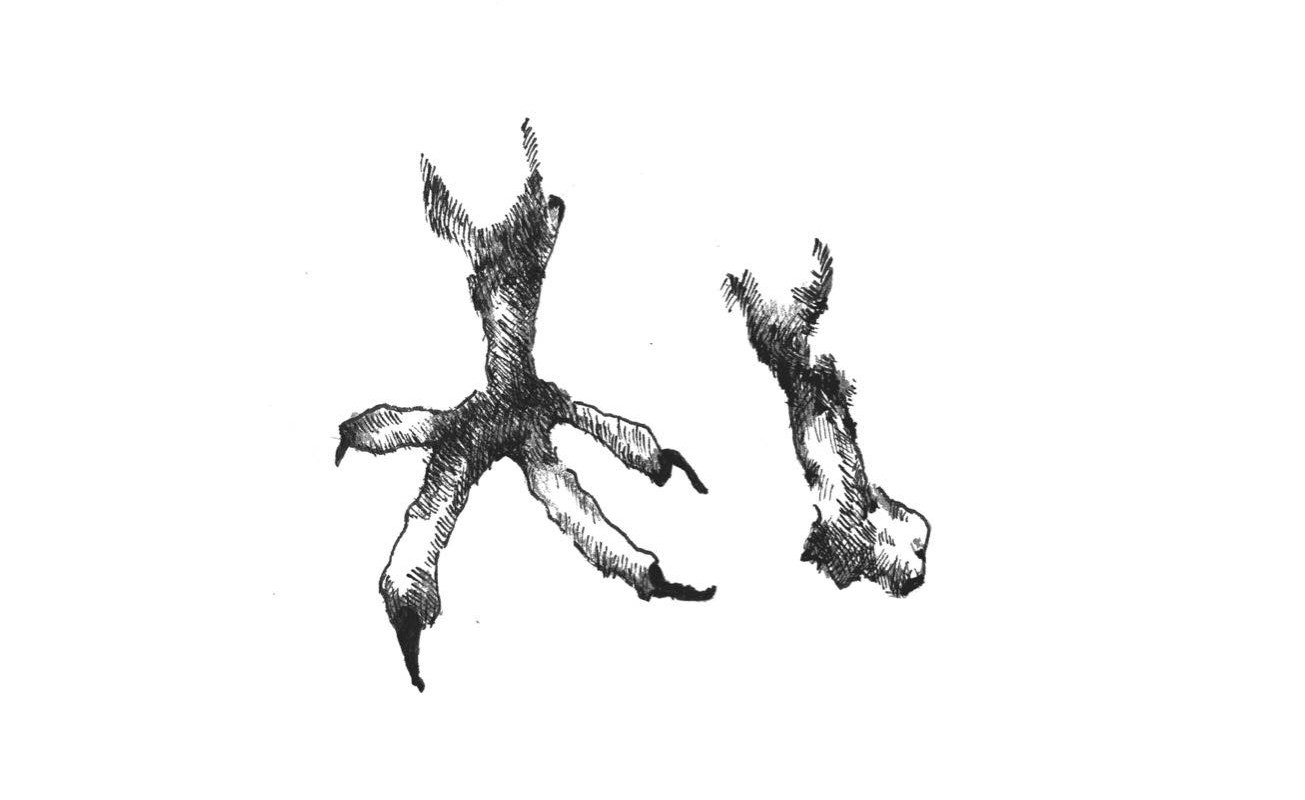
Pigeons can survive tangles that cut off circulation from all toes and eventually leave only a stump foot. However, missing or injured toes cause serious problems for pigeons, especially in the winter when pigeons benefit from switching feet to keep toes warm.
Further Reading, Resources, and Communities
There are a number of online communities dedicated to helping out stringfoot pigeons, and other more general pigeon care groups where experts can help you out in case you encounter a pigeon with other health problems. You can learn a lot from resources like the case studies available at the New York Pigeon rescue club’s string removal page below, or posts in the Palomacy Pigeon Rescue Facebook group. Good luck!
Pigeon foot string removal in NYC, with more info on treating pigeons with other problems:
Video showing how to catch pigeon from standing position: